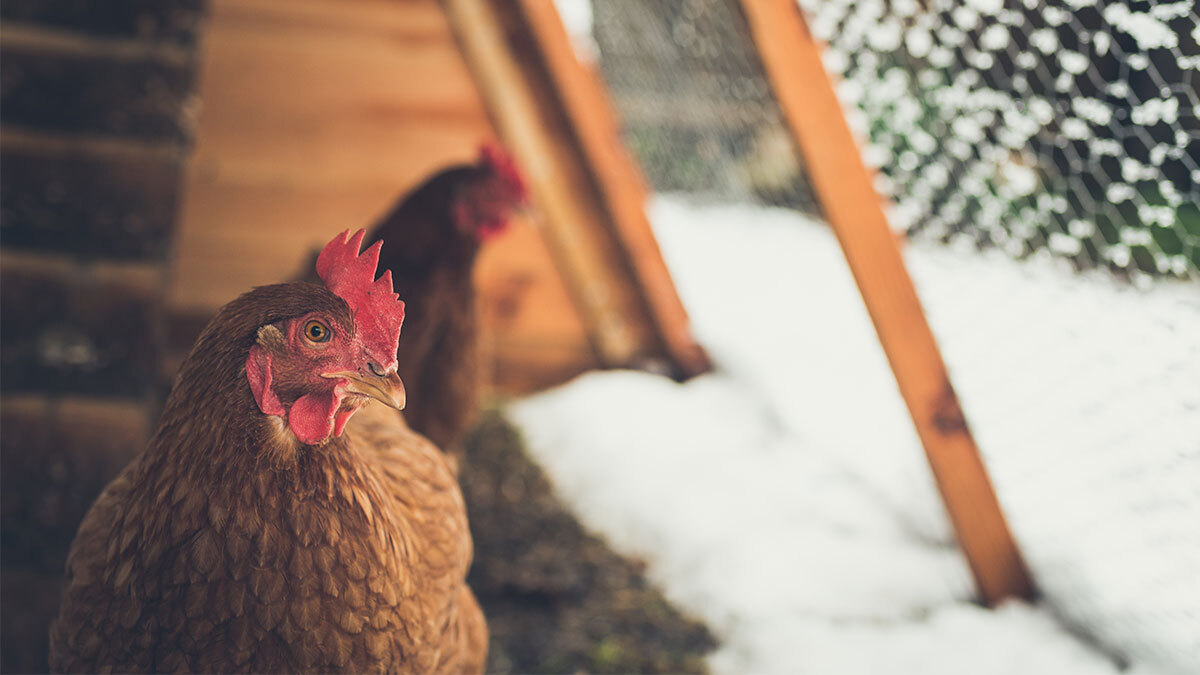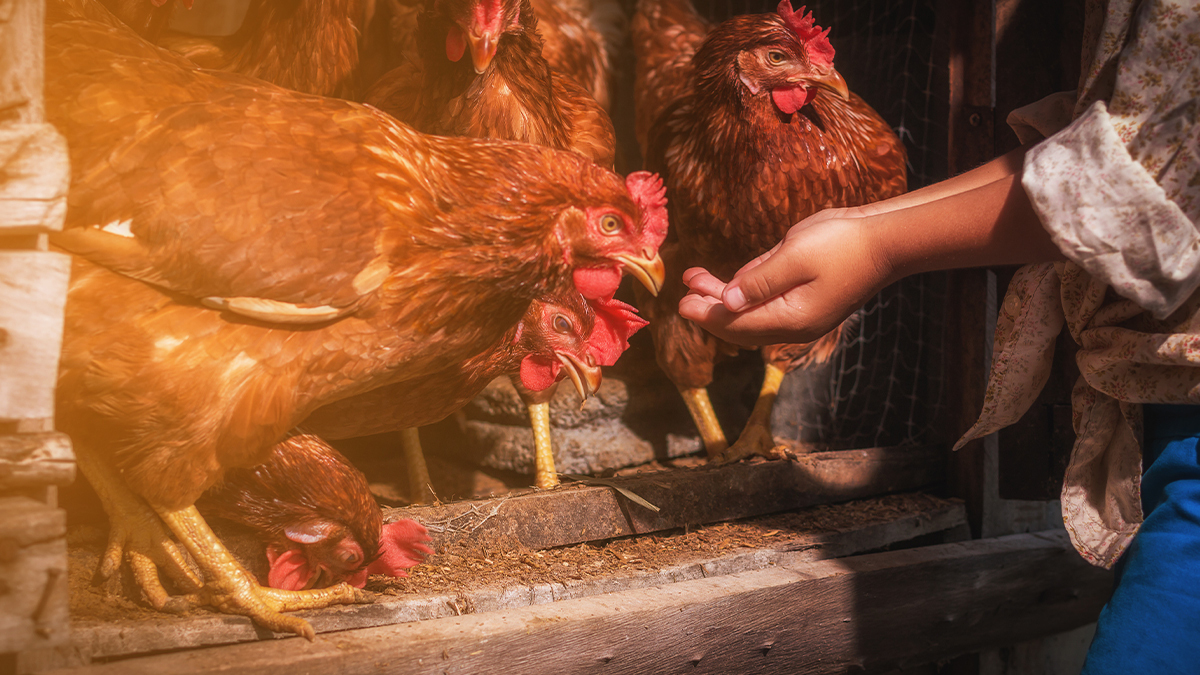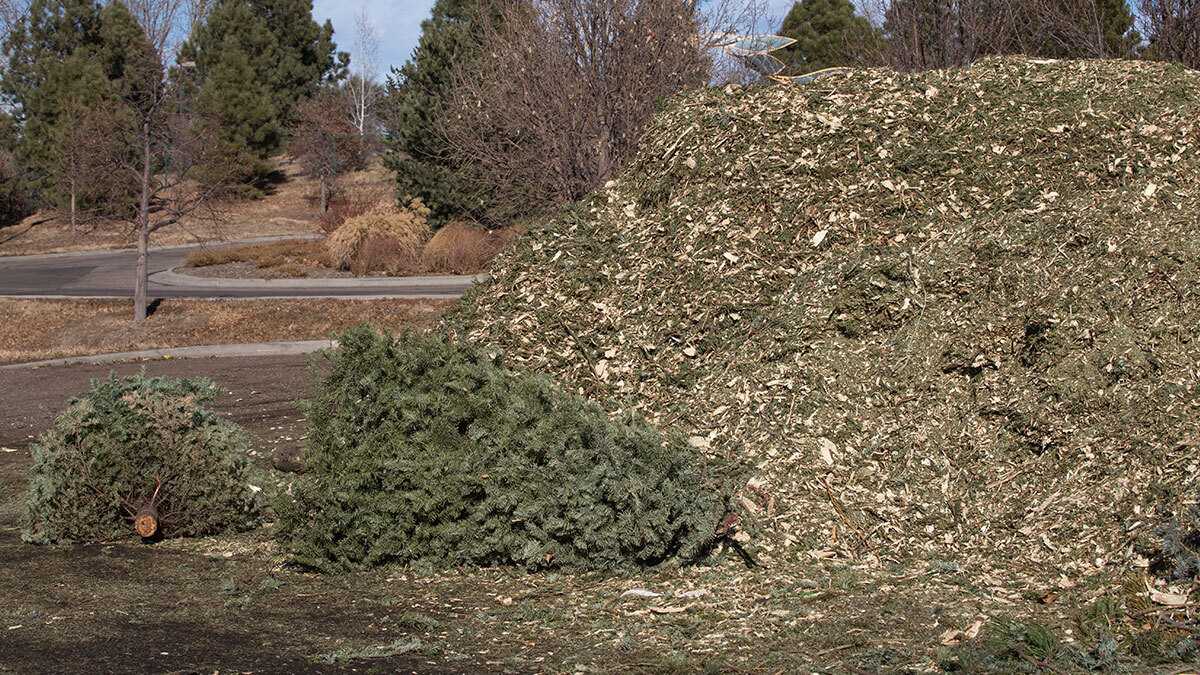on
Winter is upon us, and, if you haven’t already, now is the time to get chickens ready for the cold weather.
Like most other chores on the homestead, there are a few additional things you need to do to get your chickens ready for colder weather.
This is to ensure the health and safety of your chickens – and to make your life a little easier.
As Tractor Supply succinctly puts it, “Wet living conditions for chickens can bring upon disease and death within a few days.”
Use the following tips to help prepare your chickens and their living environment for colder weather.
1. Know Your Chickens
Ideally, you will choose the types of chickens you raise with your climate in mind.
Some chicken breeds are more cold hardy than others. These include Ameraucana, Ancona, Black Australorp, Black Giant, Blue Andalusian, Brahma, Buff Orpington, Cochin, Delaware, Dominique, Langshan, New Hampshire, Plymouth Rock, Rhode Island Red, Russian Orloff, Speckled Sussex, and Wyandottes.
Cold-hardy chickens do well in freezing temperatures.
If you do not live in the coldest U.S. states, you do not need cold-hardy chickens.
However, you should still know your chickens well enough to know what they need when the temperatures drop.
2. Inspect and Repair the Chicken Coop
One of the first ways to get chickens ready for winter is to inspect the coop and make any necessary repairs.
Winter weather, such as snow and ice, can be hard on a chicken coop. If the coop is already weak, winter weather will cause even worse damage.
Don’t let this happen.
Take time before the wintry weather hits to repair any weaknesses.
3. Clean the Chicken Coop
Before winter weather arrives, take time to clean the coop. You want to pressure wash the inside and outside of the coop before the temperatures drop so it has plenty of time to dry fully.
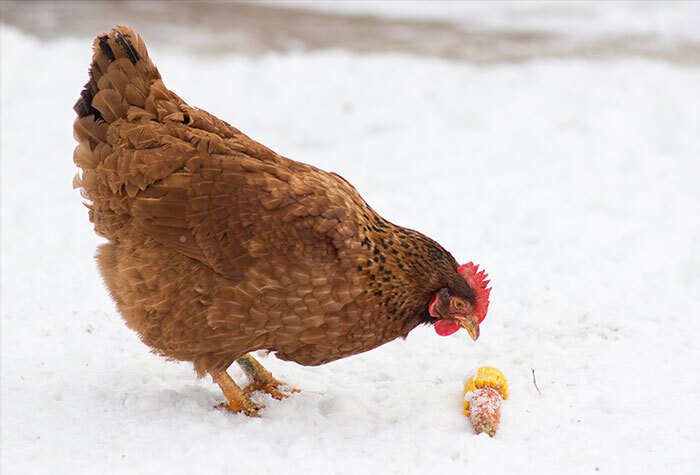
4. Stockpile Feed
It is always a good idea to stock up on chicken feed before winter arrives, whether you buy pre-made or make it yourself. If you face an extreme winter storm, you may be unable to get to stores to buy feed.
Keep in mind chickens consume more feed in the winter than they do in other seasons.
You may also want to consider adding an automatic chicken feeder if you live in a cold climate so you can ensure your chickens are fed even when it is too cold to go outdoors to feed them yourself.
5. Trim Branches and Trees
Another way to prevent worse damage before it occurs is to spend time trimming any loose or dead branches and trees in your yard.
You want to trim these before heavy ice causes them to fall and do harm to your coop or chickens.
6. Provide Adequate Ventilation
While you may want to close the coop all the way up to keep your chickens warm, this is a mistake.
Chickens need adequate ventilation to survive.
If there isn’t adequate ventilation in a coop, ammonia can build up, and the environment can become damp.
As mentioned, while chickens can handle cold weather, damp, wet environments are extremely dangerous for them.
Try to add ventilation up by the roof of the coop to prevent drafts from hitting the chickens.
7. Prepare Deep Litter Method
The deep litter method is a natural way to deal with a chicken coop. Plus, it gives off heat.
With the deep litter method, you use bedding and chicken poop to create a natural compost pile that is sanitary and a natural heater for your chickens.
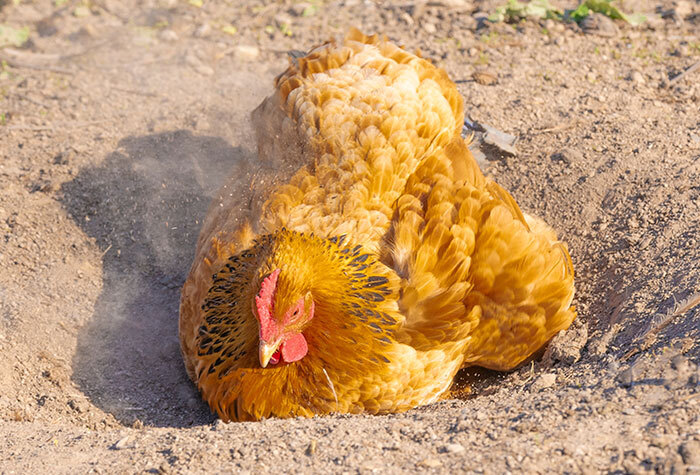
8. Add Dusting Material
One way that chickens clean themselves is by dusting their bodies. During the winter months, it is hard to do this naturally outdoors. Make it easier for them by adding dusting material, such as adding a tub of sand, to the chicken coop.
9. Make Sure There Is Extra Bedding in Wet Areas
We can’t emphasize it enough – you need to do everything in your power to keep your chickens dry.
If there are places in the chicken coop that stay wetter than other areas, such as when snow melts, add extra bedding to soak up the wetness.
Simply add an extra layer of bedding, such as straw or wood shavings, to wet paths and wet areas.
10. Find Ways to Keep Out Drafts
It’s important to protect your chickens from drafts.
Carefully go through your chicken coop and look for any places where drafts may enter.
Once you find drafty spots, add insulation.
This may be as simple as adding towels, plywood, or cardboard to places where drafts come in.
Some homesteaders choose to install permanent insulation.
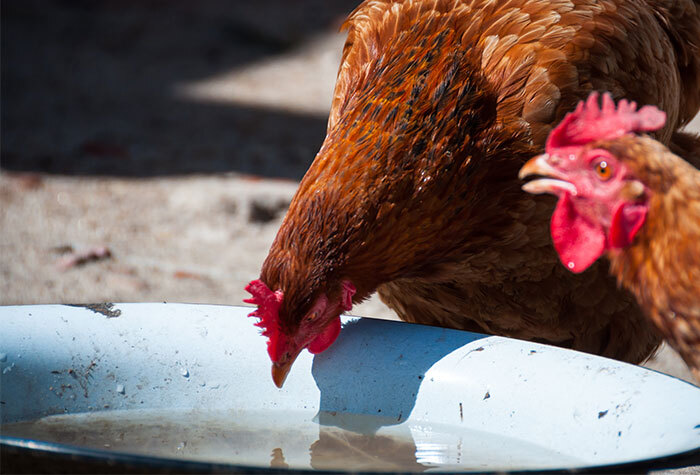
11. Prevent Water from Freezing
Chickens need fresh water every day, but this is a little more challenging during the winter.
If you live in cold climates, expect the water to freeze, which won’t do the chickens any good.
You must find a way to keep the water from freezing. You may store fresh water indoors and take it out to them. You can also place buckets to collect snow and place them in the direct sun so the snow will melt.
Some homesteaders place pin-pong balls in their water tubs to keep the water from freezing too quickly.
Or you can choose to install a heated waterer.
12. Boost Nutrition
You can help your chickens withstand the colder temperatures by providing them with extra protein and carbs.
Chickens can’t forage for greens and bugs in the chilly winter months, so you need to provide them with good nutrition to get them ready for winter.
Mother Earth News recommends, “Your chickens need 10 percent more calories during the winter than they do in the summer. During the cold weather, the chickens can get stressed which can make it difficult for them to lay eggs. To keep them feeling better, you should give them corn or pecking foods, such as forage cakes. If your birds need to bulk up a bit to prepare them for the winter, give them oatmeal.”
13. Avoid Frostbite
Keep a close eye on your chickens and be on the lookout for signs of frostbite.
Chickens are most sensitive to frostbite on the areas of their bodies not covered by feathers, such as feet, combs, and wattles. A sign of frostbite is black tips or blisters.
If wintry weather is on the way, cover these sensitive areas with a layer of Vaseline and make sure the coop is dry and draft-free. Use the weeks leading up to winter to get your chickens ready for colder temperatures.
Early preparation and prevention go a long way toward ensuring a healthy flock all year long.
For other winter homesteading tips, read our Month-by-Month Winter Homestead To-Do List.
Get access to premium content and more!



